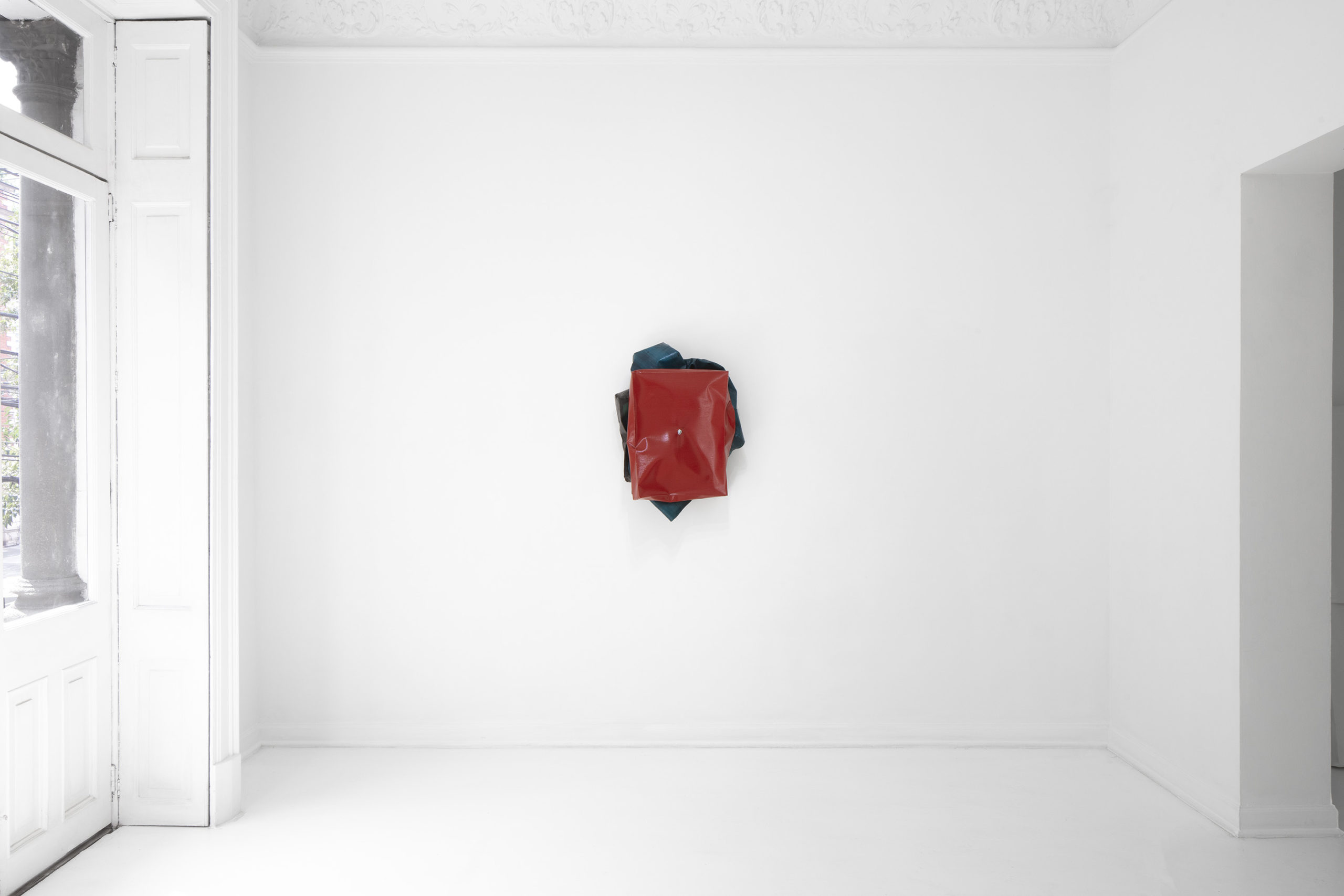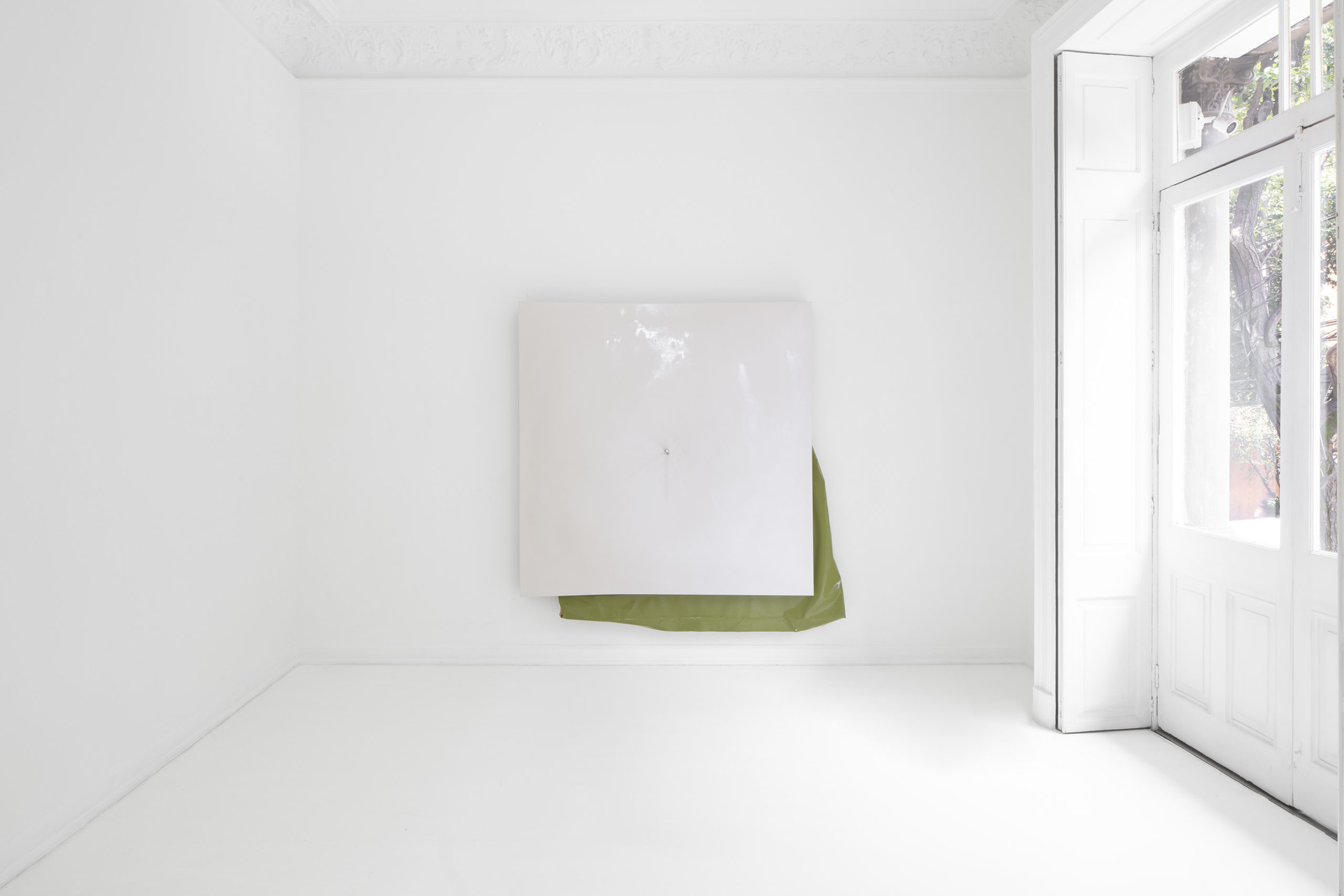
Review
Behaving badly: On Ángela de la Cruz’s 'Bulto' at Travesía Cuatro
by Constanza Dozal
Reading time
4 min
In the video that accompanies and introduces Bulto by Ángela de la Cruz, screened on the ground floor of Travesía Cuatro Gallery (Mexico City), the artist declares with a smile: I like the idea of paintings behaving badly. The meaning of that phrase becomes clear upon ascending to the first floor, where the exhibition—on view through December 13—unfolds.
The space enacts this misbehavior through gestures that play with gravity and weight: hanging pieces just ten centimeters above the floor, leaning them against the wall, or stripping them of their stretchers. The first work that greets the viewer explains the title of the exhibition: a bright white bundle—just a few shades off from the gallery’s white-cube walls—rests against the wall, folded in half. Though neither monumental nor stretcher-bound, its scale roughly matches that of a human body.

The white bundle is accompanied by others: white and brown; white, green, and red; red and fuchsia; red and turquoise; green, mustard, and blue, among others. Some share its size, while others are smaller, roughly the length of a human torso. The main difference between the first and the rest is that the latter are pierced by long stainless-steel bolts that seem to twist them at their geographic center. It is a violent act that produces a peculiar topography—small mountains, folds, and bulges that contrast with the surface of the paint, permanently pristine and wet, as if still fresh. A play of aggression, tension, and seduction.

Displayed individually or in pairs across the rooms of the old house that the gallery occupies, the bolts and layered canvases—the works are built from superimposed fabrics—invite a spatial exploration, as if they were sculptures. Perhaps behaving badly means turning sculpture into painting and vice versa, as the artist has done throughout her career, in dialogue with Minimalism and Arte Povera. Or perhaps it means snubbing one’s elders—if we take the predecessors of Ángela de la Cruz to be the Western pictorial tradition and its rules.

The exhibition succeeds in giving each work space to breathe and creating small surprises through sightlines, allowing it to be enjoyed both as a whole and in parts, the latter by presenting each piece as a singularity. The arrangement generates a sense of novelty, both through the visitor’s movement and by marking Ángela de la Cruz’s first solo show at a gallery in Mexico. Four years ago, she presented the installation Larger than Life at Museo Cabañas in Guadalajara. She has also exhibited in hundreds of shows, received multiple awards, and is widely recognized in other territories.

The artist began her career in London during the 1980s, amid punk and Thatcherism. In 2005, while pregnant, she suffered a cerebral hemorrhage and spent a period in a coma. Both she and her baby survived, but since then she has used a wheelchair and has a speech impairment. It would be easy to reduce her story to pain and trauma, or to frame it as a tale of personal triumph—but that need not be the only lens for her work. In the exhibition text, Luz Massot explains that Ángela transforms the accident into motivation: at one point, overcome with frustration, she struck a painting in her studio, altering its shape. What began as an incident became a pretext for exploring tension, force, assembly, and release.
It is precisely this last notion—release—that suggests another way of approaching Ángela de la Cruz’s work, one that acknowledges the playfulness behind her own words: I like the idea of paintings behaving badly.
Translated to English by Luis Sokol
Published on November 16 2025